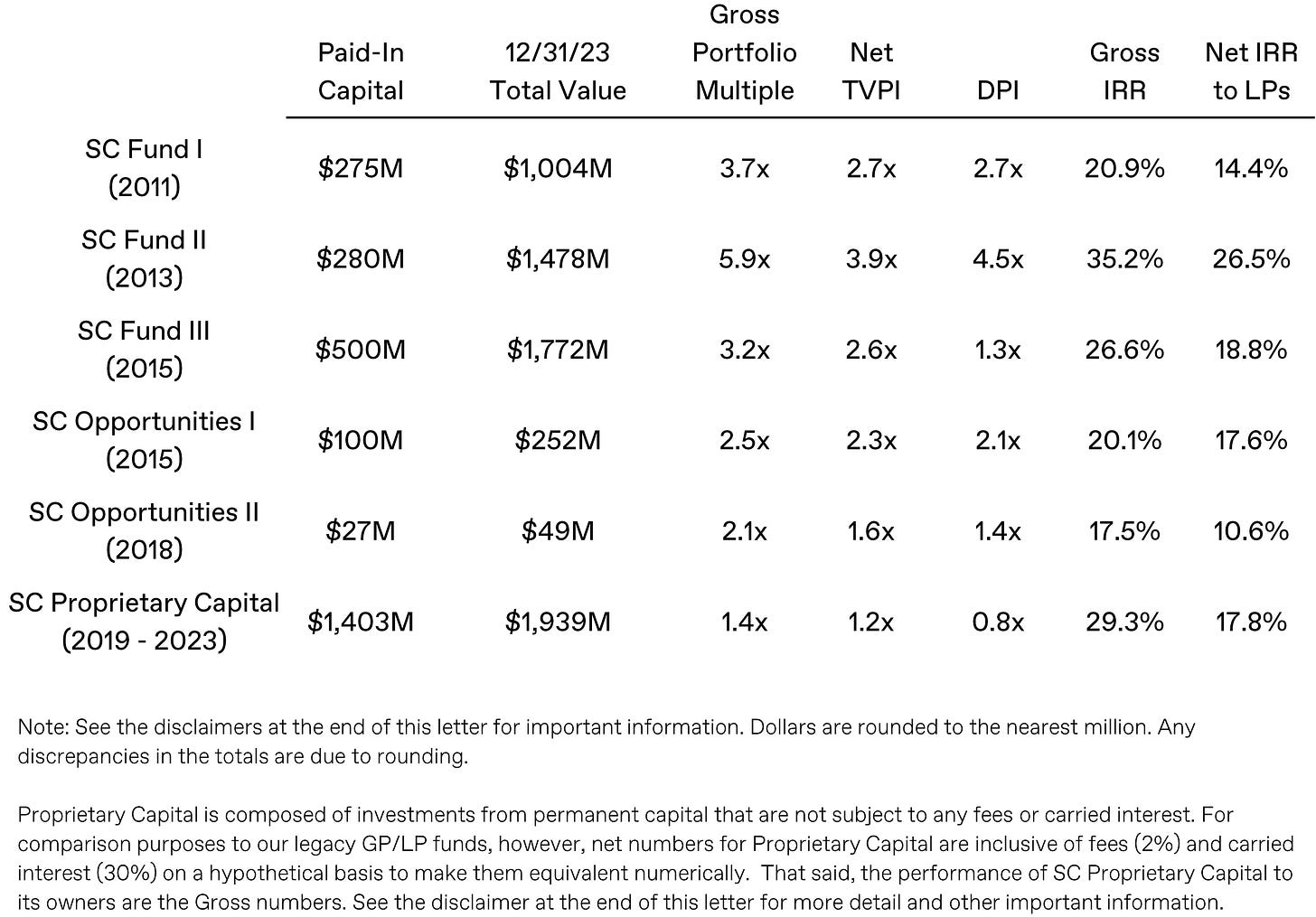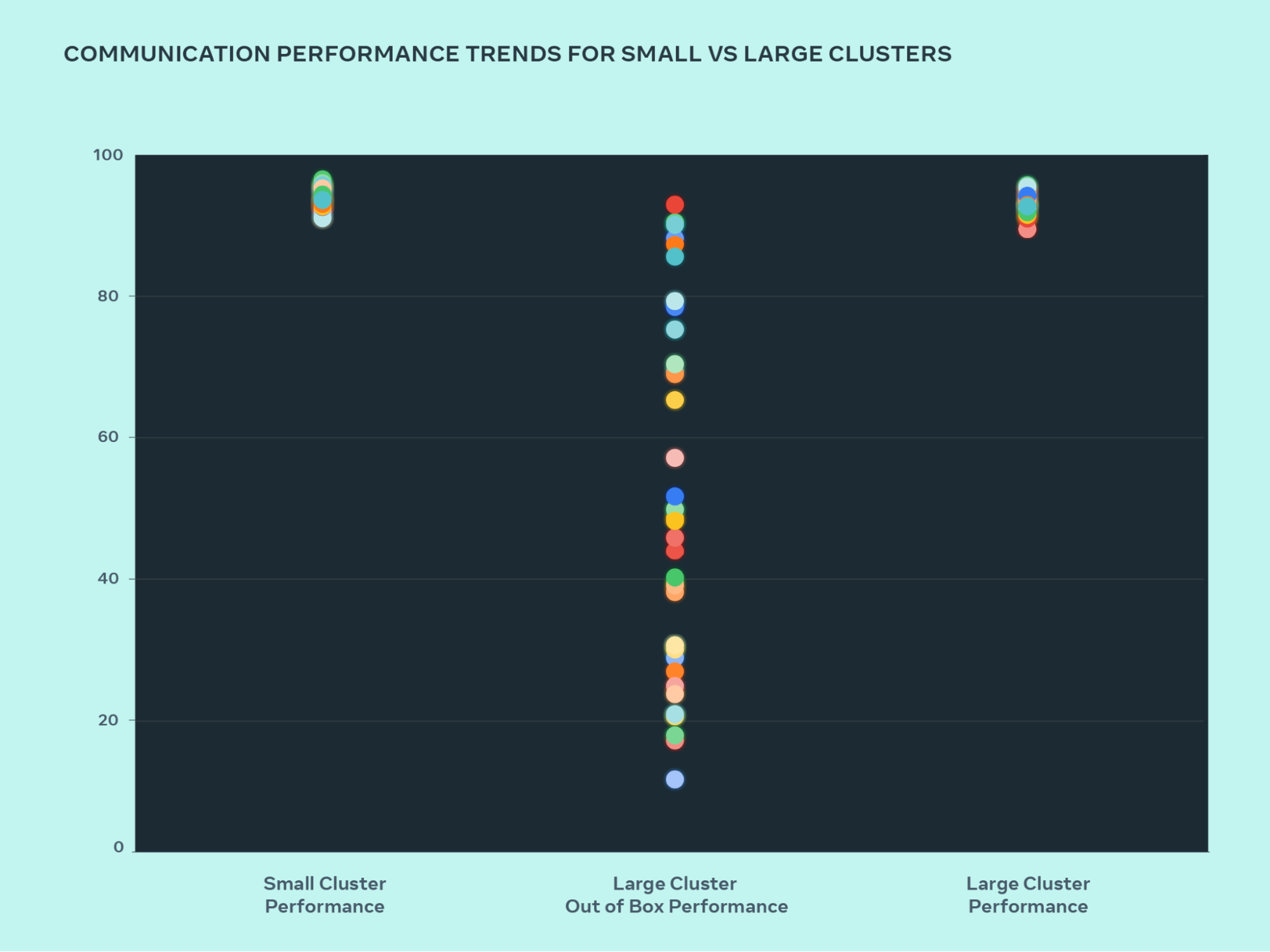-
The article is a satirical and critical examination of the AI industry, focusing on the overhyped nature of AI innovations and the problematic practices within the field. It discusses the author’s personal experiences as a data scientist, the discrepancies between AI’s promised impact vs. its actual utility, and the societal and operational inefficiencies exacerbated by the misplaced focus on AI. The piece concludes with a call to address foundational problems rather than overinvesting in AI as a panacea.
Main Points- AI's Hype vs. RealityAI's current state and future potential are critically examined, with an emphasis on the gap between hype and reality.
- Personal Journey and Industry DisillusionmentReflections on the author's personal journey and disillusionment with the AI industry.
- Future Scenarios and Realistic Uses of AISatirical takes on future scenarios and the realistic use of AI technologies.
- AI Discourse in Corporate and Tech CultureCritique on the state of AI discourse in corporate environments and tech culture.
122004763 -
The 2023 Annual Letter by Chamath Palihapitiya reflects on the past year’s economic and technological trends, advising founders and highlighting the shift towards prudent capital allocation, the impacts of rate tightening, the transformative role of AI, and the strategic shift towards deglobalization and domestic production. It also emphasizes the importance of understanding value creation in the AI ecosystem and navigating the new terrain of the creator economy.
Main Points- Shift in focus for technology companies.The shift towards a more disciplined approach in technology companies, from unsustainable growth to prudent capital allocation.
- Consequences of rate tightening.Rate tightening and the subsequent rise in interest rates have led to significant impacts on the economy and banking sector.
- AI's transformational impact.AI's rapid growth and its implications for starting software companies and challenging established businesses.
- Geopolitical impact and legislative responses.The global geopolitical landscape and legislative initiatives in the U.S. are driving a focus on domestic production and investment.
- Generative AI's role in innovation.Generative AI's role in democratizing software development and spurring innovation across industries.
122004763 -
This article discusses the cultural and ideological implications within Google, highlighted by reactions to their AI tool Gemini. Featuring insights from former employees and a detailed exploration into the company’s prioritization of diversity, equity, and inclusion over business and product efficacy, it sheds light on the systemic biases and the resultant cultural shift post-James Damore’s memo incident. The narrative unfolds through a critique of Google’s current work environment, ideological echo chamber, and its impact on product development and staff recruitment strategies.
Main Points- Controversy surrounds Google's AI tool, Gemini.Google's AI tool, Gemini, faced negative reactions due to its extreme ideological responses, highlighting systemic issues within Google's culture.
- DEI ideology deeply rooted in Google's culture.Former Google employees attributed these biases to a corporate culture deeply ingrained with DEI ideologies, positing a loss of business efficacy.
- Google's ideological shift post-Damore's firing.Incidents and internal pushes following the firing of James Damore signal a turning point towards an open ideological bias among the workforce.
122004763 -
Inversion is a family of structured language models designed to solve speed, reliability, and reasoning issues in traditional AI systems, achieving up to 100× faster speeds and significantly lower latency.
Main Points- Inversion models are highly efficientInversion models achieve high speed and reliability in structured tasks with less overhead and latency.
- Dynamic acceleration of inferenceInverted inference process leverages compiled structures to dynamically adjust compute needs, leading to acceleration.
- Continuous improvement in model performanceNew model generations aim for further improvements in latency, reliability, and quality.
- Prioritizing developer experienceDeveloper experience focuses on ensuring outputs always match expected data types.
- Advances in processing and input handlingExperiments promise significant advancements in attention processing and input handling.
122004763 -
Nvidia CEO Jensen Huang announced a new generation of AI chips called Blackwell, aiming to solidify Nvidia’s dominance as a primary supplier for AI companies. The announcement includes the introduction of the GB200 chip, which will enhance the performance of AI model training. Additionally, Nvidia is diversifying into a platform provider with the launch of its NIM software, designed to facilitate AI deployment. The move, amidst increasing competition, marks a strategic shift in Nvidia’s business model.
Main Points- New AI chip generation named Blackwell introducedNvidia introduces a new generation of AI chips named Blackwell, with an initial model dubbed the GB200, aiming to bolster its leadership in the AI chip market.
- Nvidia launches NIM for easier AI deploymentBy creating NIM, Nvidia offers a software solution that simplifies the deployment of AI on its chips, positioning itself more as a comprehensive platform provider.
- GB200 offers major performance upgradeThe GB200 chip constitutes a significant technical advancement, promising substantial performance improvements for training AI models, featuring 20 petaflops of AI performance.
122004763 -
The article discusses the evolution of ultrasound technology, emphasizing the miniaturization and affordability of handheld ultrasound devices enabled by silicon ultrasound technology and AI, potentially revolutionizing medical diagnostics and expanding their applications beyond specialized clinical settings.
Main Points- Silicon ultrasound technology enables miniaturization.The approach called Silicon Ultrasound, a type of microelectromechanical system (MEMS), enables the miniaturization of ultrasound devices.
- AI broadens the usability of handheld ultrasound devices.AI and machine learning technologies have made these devices accessible for use by non-specialists, broadening their potential applications.
- MEMS technology significantly impacts ultrasound efficiency and capabilities.The development and integration of MEMS technology have profoundly impacted the efficiency and capabilities of ultrasound devices.
122004763 -
AI Artificial Intelligence Big Tech censorship CIA corporate media disinformation FBI First Amendment free speech hoaxes intelligence agencies Internet Iron Curtain media bias Media Criticism Mike Benz misinformation Missouri v. Biden Murthy v. Missouri National Science Foundation NewsGuard NSA spy agencies Tucker Carlson AI and Machine Learning
The article discusses how AI censorship tools, funded in part by the federal government, are being used to control the visibility of information online, particularly information that opposes government and corporate media narratives. It highlights the concerns raised about freedom of speech, government transparency, and the potential impact on public opinion. The article also touches on the involvement of federal agencies in these censorship efforts, raising questions about the constitutional implications of such actions.
Main Points- Control of InformationAI censorship tools are deployed to control the visibility of information, challenging the narrative of government and corporate media ahead of elections.
- Federal Funding and AI CensorshipThe federal government has invested in developing AI tools for internet censorship, raising concerns about freedom of speech.
- Targets of AI CensorshipAI censorship efforts include targeting misinformation and managing public opinion through restricting or promoting certain viewpoints.
- Government Involvement in CensorshipFederal agencies have been involved in censorship efforts, raising significant concerns about constitutional rights and government transparency.
122004763 -
Alan Kay explores a range of topics in a talk at UCLA, moving from the impact of graphical user interfaces to the implications of AI and the relationship between technology practitioners and theorists. He stresses the transformative power of GUIs, the unpredictability of AI, and calls for a more integrated approach to technology development.
Main Points- GUIs' critical role in tech industryAlan Kay discusses the importance of GUIs for the success of the computing industry, reflecting on his experiences at Xerox Park.
- AI's potential misinformation risksKay warns about the potential dangers of unrestrained AI development and misuse, using an example of a chatbot going awry.
- Tech theory-practice splitKay points to a disconnect between technological practitioners and theorists, suggesting a stronger role for government and education in bridging this gap.
122004763 -
AI Meta GPU Clusters Open Source Infrastructure AI and Machine Learning Technology Artificial Intelligence
Meta announces the construction of two 24k GPU clusters as a significant investment in its AI future, emphasizing its commitment to open compute, open source, and a forward-looking infrastructure roadmap aimed at expanding its compute power significantly by 2024. The clusters support current and future AI models, including Llama 3, and are built using technologies such as Grand Teton, OpenRack, and PyTorch.
Main Points- Meta announces two 24k GPU clusters for AI workloads, including Llama 3 trainingMarking a major investment in Meta's AI future, we are announcing two 24k GPU clusters. We are sharing details on the hardware, network, storage, design, performance, and software that help us extract high throughput and reliability for various AI workloads. We use this cluster design for Llama 3 training.
- Commitment to open compute and open source with Grand Teton, OpenRack, and PyTorchWe are strongly committed to open compute and open source. We built these clusters on top of Grand Teton, OpenRack, and PyTorch and continue to push open innovation across the industry.
- Meta's roadmap includes expanding AI infrastructure to 350,000 NVIDIA H100 GPUs by 2024This announcement is one step in our ambitious infrastructure roadmap. By the end of 2024, we’re aiming to continue to grow our infrastructure build-out that will include 350,000 NVIDIA H100 GPUs as part of a portfolio that will feature compute power equivalent to nearly 600,000 H100s.
122004763 -
Zed coding environment performance collaboration AI GPUI Rust CRDT Artificial Intelligence AI and Machine Learning
Zed is a high-performance coding environment that leverages CPU and GPU power, integrates AI for code generation, and emphasizes collaboration with features like real-time code editing and shared workspaces. It introduces advancements such as GPUI framework for smooth rendering and uses Rust for multi-core processing efficiency. Zed also features a full syntax tree for enhanced coding assistance and supports conflict-free collaborative coding through CRDTs.
Main Points- Engineered for PerformanceZed efficiently leverages every CPU core and your GPU to start instantly, load files in a blink, and respond to keystrokes on the next display refresh.
- Intelligence on TapSave time and keystrokes by generating code with AI. Zed supports GitHub Copilot out of the box, and you can use GPT-4 to generate or refactor code by pressing ctrl-enter and typing a natural language prompt.
- Language-awareZed maintains a full syntax tree for every buffer as you type, enabling precise code highlighting, auto-indent, a searchable outline view, and structural selection.
- Connect with your TeamWith Zed, multiple developers can navigate and edit within a shared workspace.
122004763
We can't find the internet
Attempting to reconnect
Something went wrong!
Hang in there while we get back on track

Tags
see all- Technology
- AI
- Open Source
- programming
- AI and Machine Learning
- Elixir
- Artificial Intelligence
- philosophy
- Personal Growth
- Rust
- business
- social change
- software development
- Python
- machine learning
- innovation
- Linux
- DIY
- collaboration
- Nominatim
- architecture
- Entertainment
- performance improvement
- performance
- education
- Android
- PostgreSQL
- Docker
- Deadspin
- ActivityPub
- Slint
- Developer Experience
- NixOS
- SQL
- Drone
- neural networks
- simulation
- Erlang
- Journalism
- Entrepreneurship
- LLM
- scalability
- Concurrency
- fault tolerance
- immutable URLs
- Nix
- productivity
- WebAssembly
- Database
- Generative AI
- Security
- Home Lab
- deployment
- ESP32
- Language Models
- automation
- Data Visualization
- Markets
- Networking
- Ecto
- computing
- BEAM
- metal recovery
- Quantum Computing
- Robotics
- Web 2.0
- financial wellbeing
- harsh environments
- Miniaturization
- eclipse safety
- Public Health
- Web PKI
- Chess
- Transparency
- memory allocation
- safety
- brinespace
- Diversity
- brewer's yeast
- hardware review
- Cryptanalysis
- compiler backend
- anterior neostriatum
- compression
- Psychology
- Vulnerabilities
- computational complexity
- luxury
- Windows
- Natural Language Processing
- cloud native
- Legal Battle
- maintainability
- Lifestyle
- US Jobs Market
- Mike Benz
- dinosaurs
- Investment Strategy
- Xerox Park
- design
- Bletchley Park
- gaming
- Consumer Advice
- AI Democratization
- Economy
- Behavioral Biology
- Particles
- Parallelism
- brain abnormalities
- Query Optimization
- Church Growth
- Mathematics
- WWII
- problem-solving
- Cerebras Systems
- structured inference
- API
- LaVague
- mechanical design
- UNIX
- Certificate Transparency
- Ericsson
- Iman Gadzhi
- Thermodynamic Computing
- Nvidia
- electrolyte solutions
- setup simplicity
- Synchronization Primitives
- Wasmtime
- work-life balance
- Big Tech
- LLMs
- Twitch
- Tucker Carlson
- Garbage Collection
- machining
- Personal Reflection
- free speech
- Generosity
- Sports Stadiums
- Ash 3.0
- WebTransport
- celestial event
- ChatGPT
- processor-controlled
- computer graphics
- Actor model
- oral rehydration solution
- Missouri v. Biden
- password security
- Academic Freedom
- developer tools
- capitalism
- compilation
- total solar eclipse
- Performance Engineering
- Effective Methods
- 3D printing
- Wi-Fi Control
- hardware-controlled
- S&P 500
- Telemetry
- Encoding
- Theology
- First Amendment
- ISO GQL
- Web Monitoring
- Data Compression
- development environment management
- intelligence agencies
- Satire
- Divine Healing
- NSA
- WSE-3
- corporate media
- YouTube
- Project Management
- Sunlight
- basal ganglia
- constraints
- Online Learning
- Mobile App Development
- Medical Technology
- teamwork
- Server Management
- High-Performance Computing
- aviation
- Hugo Barra
- processes
- GUI Toolkit
- Foreign Data Wrapper
- Debugging
- spiritual experience
- indie game development
- kernel exploitation
- note-taking
- Cost-saving
- biosorption
- shuffle
- Probabilistic Machine Learning
- Economic Trends
- Media Criticism
- CMOS integrated circuits
- GPU security
- Technology Criticism
- health benefits
- Upptime
- Flutter
- Jensen Huang
- copyright
- Logging
- Memory Tagging Extension
- streaming service
- undecidability
- Enigma
- Speculative Execution
- remote work
- Coding
- Social Responsibility
- Corporate Profits
- Adm. Hyman G. Rickover
- Cipher
- Stable Video 3D
- AI Chip
- Nostr
- boot sequence
- APIs
- Pixel 8
- management
- register allocation
- Jordan Peterson
- Non-Transformer Models
- NewsGuard
- Computer Systems Research
- Content Creation
- system administration
- navy
- Software Support
- nuclear submarine
- Veeps
- Elisp
- StashPad Docs
- Truth
- Pentecostal Movement
- Categorical Thinking
- Deglobalization
- live sports
- Annual Letter
- cholera
- GitHub Actions
- Vaccine Mandates
- Flox
- devops
- Containerization
- E-graphs
- NP class
- Data Contamination
- Function Calling
- table formatting
- treatment
- Internet Iron Curtain
- Extropic
- AR
- Ovid
- development
- Federated System
- National Science Foundation
- Operating Systems
- functional programming
- Cypher
- JIT Compiler
- community discourse
- virtual environment
- Nostalgia
- RISC
- time management
- WebRTC
- Microsoft Research
- CIA
- AMD Graphics Cards
- Murthy v. Missouri
- superoptimization
- Geocoding
- GUI
- package manager
- Chips
- Evangelism
- low-cost project
- Wikipedia
- mammals
- communication
- Standards
- library
- OpenAI
- Selenium
- weight loss
- workplace culture
- Cranelift
- diagnosis
- pattern-matching
- troubleshooting
- Handheld Devices
- Circuit Digest
- Statistical Analysis
- AppSignal
- Parallel Computing
- titanosaurs
- spy agencies
- Meta
- The New York Times
- Torsion Springs
- Deep Packet Inspection
- leadership
- Growth
- OpenStreetMap
- Zed
- Ollama
- Let's Encrypt
- Richard Stallman
- GPU Clusters
- life advice
- Garnet
- software failure
- COVID-19
- LiveView
- Turing Machines
- federated models
- operating system
- GPUI
- Long-Polling
- text renderer
- software
- flash memory
- message passing
- AI-driven development
- Genetics
- community building
- schema migration
- cache-store
- Live-Preview
- evaluation
- BSD
- real-time communication
- software engineering
- video games
- hoaxes
- Church-Turing Thesis
- Algorithm
- Human Behavior
- workflows
- conditional
- Log-Normal Distribution
- CRDT
- AI Supercomputers
- Tablex
- FBI
- Garage Door Repair
- TypeScript
- Technology Trends
- Software Release
- pcase
- e-waste management
- N-channel diamond MOSFET
- Hollywood
- Lockdowns
- reptiles
- coding environment
- asynchronous communication
- Emacs
- Uppttime
- biometrics
- Financial Woes
- Blackwell
- 3D generation
- Learning Curve
- computational models
- Structured Logging
- Berkeley
- Server-Sent Events
- Race Conditions
- The Jet Business
- misinformation
- Stashpad
- Customization
- bitfield
- software critique
- Stability AI
- reinforcement learning
- VIBES
- immersive technology
- UI development
- Fingerprinting
- In-Context Learning
- scaling
- SIMA
- Regression Analysis
- Techno-Optimism
- Algorithm Design
- AT&T
- AI Acceleration
- Domain Modeling
- RP2040
- incident commander
- Personal Pronouns
- Ultrasound
- OpenVPN
- diamond electronics
- Hardware Selection
- theoretical computer science
- Notifications
- dehydration
- execution plan
- CVE-2023-6241
- animal behavior
- Google Docs alternative
- macOS
- Patience
- developmental language disorder
- Culture
- Johnny Depp
- hash table
- Sports
- browser automation
- Vision Pro
- nuclear navy
- authentication
- Database Innovation
- knowledge sharing
- Technology History
- virtual reality
- Xerox PARC
- UI/UX Design
- Transition
- WebSockets
- VS Code
- Computer Science
- cryptography
- .NET
- Daytona
- Android security
- Optimization
- PRQL
- Servers
- media bias
- Neovim
- VPN
- code-generation
- Design Systems
- censorship
- user code execution
- Capabilities
- Queries
- game design
- randomness
- x86
- Wafer Scale Engine 3
- lawsuit
- Source Code
- AI agent
- private jet
- PCB design
- Redis
- graph theory
- system design
- Abundance
- Cybersecurity
- sustainable technology
- Tools Format
- Phoenix
- system efficiency
- MEMS
- Decision Table
- Alan Kay
- Public Image
- Management Disputes
- computer vision
- Graph Database
- cond*
- Infrastructure
- Encyclopedia
- VR
- ARPA
- web development
- Apple
- Hermes-2-Pro-Mistral-7B
- DuckDB
- Unison
- disinformation
- sauropod
- Computability
- Feature Learning





